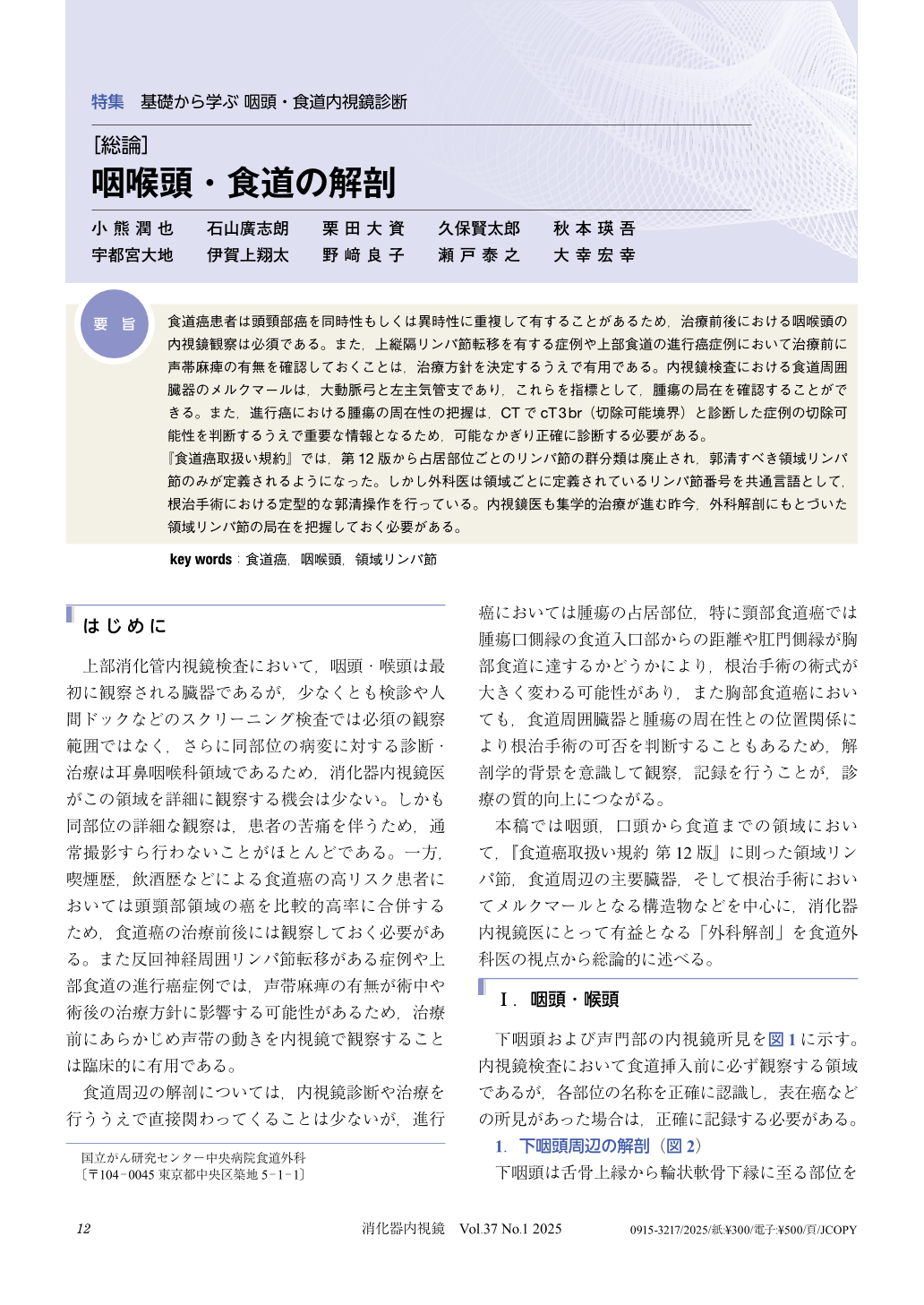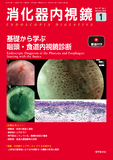Japanese
English
- 有料閲覧
- Abstract 文献概要
- 1ページ目 Look Inside
- 参考文献 Reference
要旨
食道癌患者は頭頸部癌を同時性もしくは異時性に重複して有することがあるため,治療前後における咽喉頭の内視鏡観察は必須である。また,上縦隔リンパ節転移を有する症例や上部食道の進行癌症例において治療前に声帯麻痺の有無を確認しておくことは,治療方針を決定するうえで有用である。内視鏡検査における食道周囲臓器のメルクマールは,大動脈弓と左主気管支であり,これらを指標として,腫瘍の局在を確認することができる。また,進行癌における腫瘍の周在性の把握は,CTでcT3br(切除可能境界)と診断した症例の切除可能性を判断するうえで重要な情報となるため,可能なかぎり正確に診断する必要がある。
『食道癌取扱い規約』では,第12版から占居部位ごとのリンパ節の群分類は廃止され,郭清すべき領域リンパ節のみが定義されるようになった。しかし外科医は領域ごとに定義されているリンパ節番号を共通言語として,根治手術における定型的な郭清操作を行っている。内視鏡医も集学的治療が進む昨今,外科解剖にもとづいた領域リンパ節の局在を把握しておく必要がある。
Since patients with esophageal cancer may have concurrent or metachronous head and neck cancers, endoscopic evaluation of the pharyngolarynx for them before and after treatment is essential. In addition, in cases with upper mediastinal lymph node metastasis or advanced upper esophageal cancer, it is useful to check for vocal cord paralysis before treatment in order to determine the treatment strategy. The landmarks of the organs surrounding the esophagus in endoscopic examination are the aortic arch and the left main bronchus, and these can be used to confirm the localization of the tumor. In addition, understanding the circumferential location of tumors in advanced cancer is important information in determining the resectability of cases diagnosed as cT3br by CT, so it is necessary to diagnose as accurately as possible.
In the 12th edition of the Japanese Classification of Esophageal Cancer, the group classification of lymph nodes by location of their occupation has been abolished, and only regional lymph nodes that should be dissected are defined for lymph nodes. However, surgeons use the lymph node numbers defined for each lymph node region as a common language to perform standard procedures in radical surgery. As multidisciplinary treatments become more common, endoscopists need to understand the location of regional lymph nodes based on surgical anatomy.

© tokyo-igakusha.co.jp. All right reserved.


